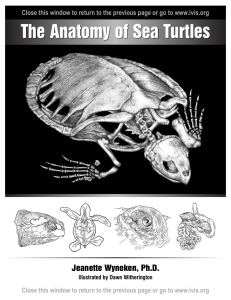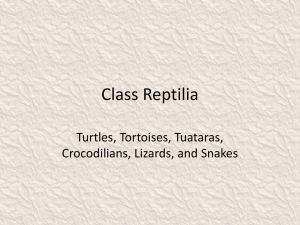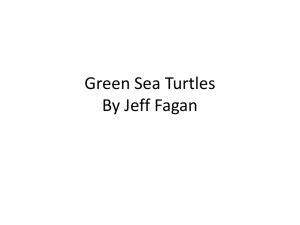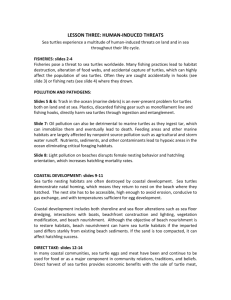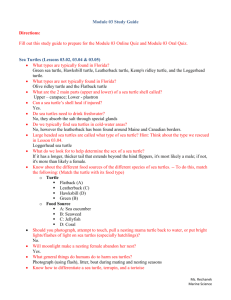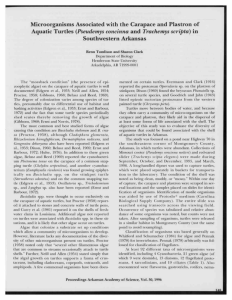Florida Sea Turtles Dichotomous Key
advertisement
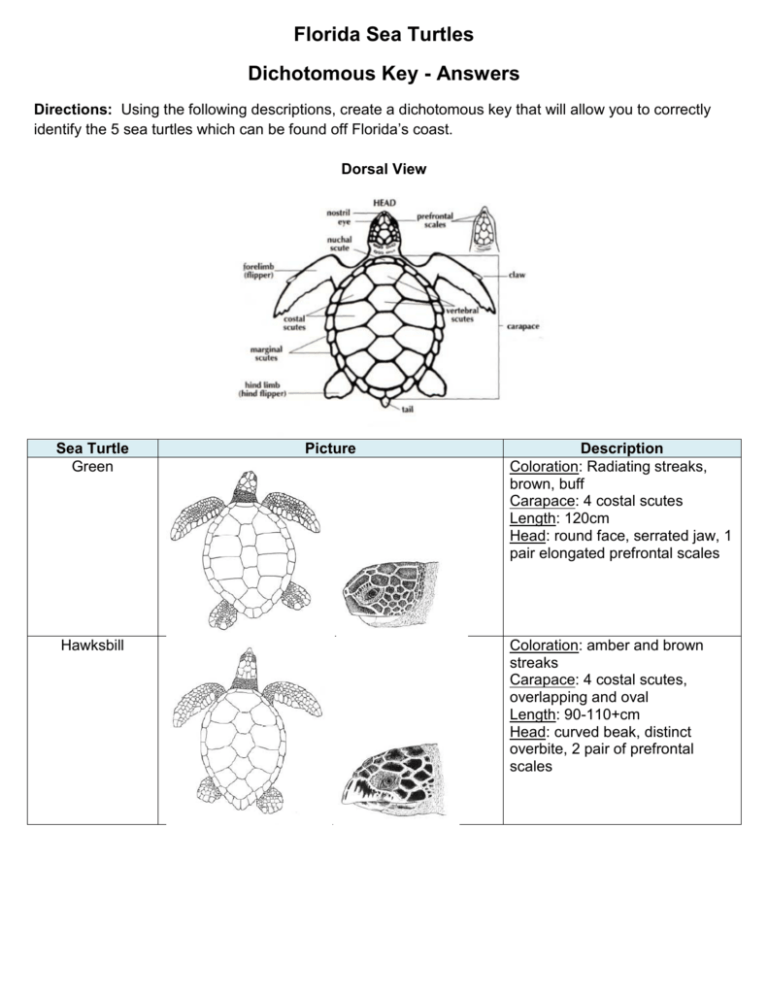
Florida Sea Turtles Dichotomous Key - Answers Directions: Using the following descriptions, create a dichotomous key that will allow you to correctly identify the 5 sea turtles which can be found off Florida’s coast. Dorsal View Sea Turtle Green Hawksbill Picture Description Coloration: Radiating streaks, brown, buff Carapace: 4 costal scutes Length: 120cm Head: round face, serrated jaw, 1 pair elongated prefrontal scales Coloration: amber and brown streaks Carapace: 4 costal scutes, overlapping and oval Length: 90-110+cm Head: curved beak, distinct overbite, 2 pair of prefrontal scales Kemp’s Ridley Coloration: gray to light olive green Carapace: round, 5-6 costal scutes Length: 70cm Head: triangular, relatively large, 2 pair of prefrontal scales Leatherback Coloration: dark gray/black with white spots Carapace: tapered, leathery with 5 ridges Length: 165-190+cm Head: tooth-like notch on either side of upper jaw, no scales Loggerhead Coloration: reddish brown/brown Carapace: longer than wide, 5 or more costal scutes, first pair very small Length: 90-110+cm Head: large head, 4 or more prefrontal scales Florida Sea Turtles Dichotomous Key Description Identification a. go to 2 1a. Has scales b. Has no scales b. Leatherback 2a. Has 4 scutes a. go to 3 b. Does not have 4 scutes b. go to 4 3a. Has 1 pair of prefrontal scales on head a. Green b. Does not have 1 pair of prefrontal scales on head b. Hawksbill a. Kemp’s Ridley 4a. Has a round carapace b. Does not have a round carapace b. Loggerhead Dichotomous Key Flow Chart Draw a flow chart, based on your dichotomous key, which will help you identify the 5 species of sea turtles found in Florida waters. Florida Sea Turtles Has Scutes Does NOT have Scutes Leatherback Has 4 scutes Does NOT have 4 scutes Has 1 pair of prefrontal scales Does NOT have 1 pair of prefrontal scales Has a circular carapace Does NOT have a circular carapace Green Hawksbill Kemp’s Ridley Loggerhead Questions 1. Define dorsal: the back or posterior of a organism Define scute: external plate or scale, as on the shell of a turtle 2. In your own words, describe how a scientist uses a dichotomist key. Answers will vary, should describe its use as an identification tool, and give a brief summary as to how a dichotomous key uses two contrasting statements about the characteristics of an organism in an attempt to correctly identify an organism based on its physical characteristics. 3. Which sea turtle characteristic was most valuable to you when distinguishing between the different sea turtles? Explain why was this characteristic is useful for identification? Answers will vary – students must choose on characteristic and explain how it is useful in identifying sea turtles; particularly its ability to draw attention to unique characteristics between the turtles. 4. Which of these sea turtles has evolved the most unique characteristics? Describe the difference between the characteristics of this sea turtle and the others. The leatherback sea turtle is the most physically unique turtle of the bunch. It is much larger in size compared to the other turtles, it has a leathery carapace, and has distinct coloring- black with white spots. 5. If you were snorkeling over a reef, explain how you would know if you were swimming next to a Kemp’s Ridley or Loggerhead sea turtle? Answers will vary - students should refer to and use the characteristics provided to them and used in their dichotomous key to distinguish between the two turtles. 6. Discuss how size might affect a sea turtle’s diet, reproduction, population size and conservation efforts. Size effects a sea turtle’s diet – requires more energy and thus more food, reproduction – smaller number of eggs/nest, population size – less eggs, requires more food, thus smaller population size, conservation efforts – easy targets for poachers, small number of eggs/nest

